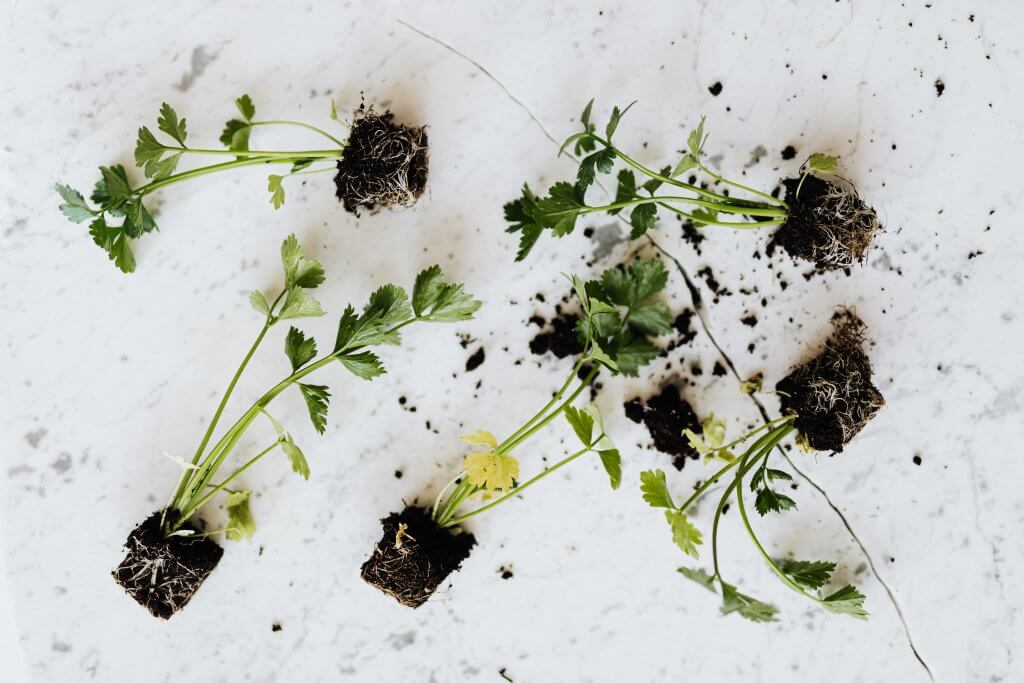A Guide to Moving Plants

You may be ready to put down roots in a new home, but are your plants?
Here are some tips for moving plants.
What do you think of before you move? Generally most people think about boxes, newspapers, a moving company, rental trucks, and bribing friends to help pack.
Have you stopped to think about what you’re going to do with your plants?
Unlike humans, plants were meant to stay in one spot for the entirety of their lives. Moving plants from one spot to another can disrupt their routine and affect how they grow. Find out below what you can do to successfully and legally transport your precious garden inhabitants safely to their new home.
Check the Laws
Yes, you read that right! There are laws regulating the transporting of plants from state to state.
While it might seem ridiculous, these laws prevent outbreaks of plant diseases or invasive species that could interfere with the local ecosystem or agriculture industry.
Before you move, check the regulations of the Department of Agriculture for your new home state. Certain plants may require an inspection or certification to prove that they are pest- and disease-free. Other plants may be banned entirely.
In fact, most people find that moving plants over state lines is more trouble than it’s worth. If you agree (and we can’t say that we blame you!), it would be simpler to donate your plants to a friend or neighbor and purchase new ones after you’ve settled in.
If your move is within state lines, you will certainly have less legal hoops to jump through, but you’ll still need to follow a process to make sure your leafy friends will survive (and thrive).
Before the Move
Unless you’re in a huge hurry, you will likely know that you are moving several months prior to moving day. About a month before, begin to take extra care of those plants.
Plants are very sensitive to their environments. Changing up the light, temperature, and water too drastically can shock them.
For a long-distance move between states, prune off any dead leaves and repot your plant in sterile soil. This helps to prevent any pesky critters stressing your plants before an even more stressful move. It also helps prevent your plants from being discarded at any checkpoints. It is possible that you’ll have to go through an actual inspection and you don’t want to run into any trouble!
As the date approaches, make sure your plants are well-watered and fertilized to strengthen them for the move ahead.
Make Room In Your Car
Even if you hire a moving company to take the stress off of you during your move, there are certain things you’ll still have to move yourself.
By law, there are certain things that moving companies cannot move…and plants are one of them. Moving plants without a special license is illegal; your average moving company is better off focusing on keeping your belongings safe than memorizing the numerous laws and regulations controlling plant transport.
While these laws were enacted to keep pests and invasive species at bay, it turns out that this is also the best practice for keeping your plants healthy.
Most moving trucks do not have climate control in the bed of the truck. This doesn’t pose a problem for things like furniture and clothing, but plants have light, water, and temperature requirements that a truck just can’t meet.
If you’re driving to your new home, the best area for the plants is in the back seat of your car on the floor. This helps them not to tip over. You can also put them in the trunk, but be sure that you pack a lot of items around them so they keep upright and check on them frequently.
If you’re flying to your new home (and simply can’t bear to leave that prize orchid behind!) you can always have it shipped to your new home. Follow the guidelines for the shipping company you’re using so that your plants arrive in good condition.
Know Your Zone
There’s a good chance your houseplants can grow just as well in one home as another. But outdoor plants are a different story.
Plants can’t just grow anywhere. Each plant has a range of gardening zones that it can thrive in. Be sure to cross-check your new zip code with the USDA’s Plant Hardiness Map to make sure it will survive the winter.
For example, if you’re moving from Washington State to Florida, your prize apple tree may not fare too well in the Southern climate. Apple trees need a cold snap and Florida, well…has no “snaps.”
The same goes for any types of fruit, vegetable, flower, or foliage: each living thing needs different care.
Don’t fret! This doesn’t have to be the end of your gardening days. If your old plants can’t thrive in your new climate, do some exploring of what does grow well in your zone. Maybe you can trade your apple tree for an orange tree!
Packing Your Plants
Moving plants is easy if they’re already in a container. You can pack them snugly into a box or secure them in the floor of your car and be on your way.
Outdoor plants are a little trickier.
Start by trimming back the foliage as much as you dare. This will not only make it easier to transport, it will help the plant conserve energy that it will need during the journey. Make sure the plant is well-hydrated and recently fed with some fertilizer or plant food, too.
When digging up the plant, make sure you dig in a wide circumference, to keep as much of the roots intact as possible. Next, place the plant in a paper bag (for small plants) or wrap the root ball in burlap. (Plastic bags might be convenient, but they’re not very breathable.)
During and After
The #1 Rule of Moving is this: Take care of living things first! During the move, take care of your family, your pets, your plants, and your belongings…in that order.
You wouldn’t expect a child or dog to go two days with no food or water. The same goes for your plants.
Even in the temperature-controlled car, your plants are still going without the essentials they need to thrive: food, sunlight, shade, and fresh air. If your move involves a long drive in a hot climate, make sure to pull over and give your plant some shade and a long drink of water. If you’re moving during the winter, pull over and let your plants bask in the sun.
Once you reach your destination, tend to your plants quickly. Find a spot with good light (a south-facing window is best) and let them settle in their new spots while you unpack.
Should They Stay Or Should They Go?
If there is a law against bringing one of your plants to your new home, there’s not much of a decision to be made. But if those greens are a “go,” you have a decision to make: will you be responsible for moving those plants into your new home or leaving them behind?
If the tips we’ve provided above sound like too much work, you could always try taking a cutting of your plant. That way, you don’t have to worry about your plants being too fragile (or unwieldy) to tolerate the move.
We know you’ve worked hard taking care of your plants, now let us do the rest of the hard work for you. Whatever your needs, we are here to help you get through your move with as little stress as possible. Contact us today for your free quote and we’ll make your move as simple as ABC.
Recent Posts
- The Ultimate Guide to Packing Office Equipment April 12, 2024
- How to Find a Reliable Mover (and Avoid Scams!) April 5, 2024
- How Much Does It Cost To Move (Without a Moving Company)? March 13, 2024










